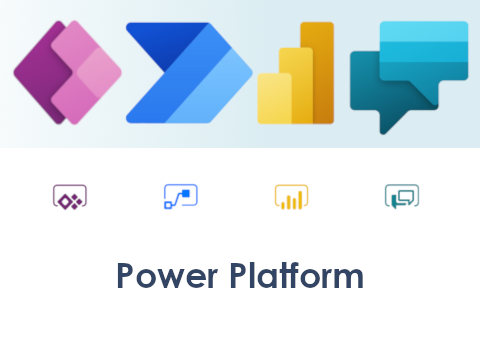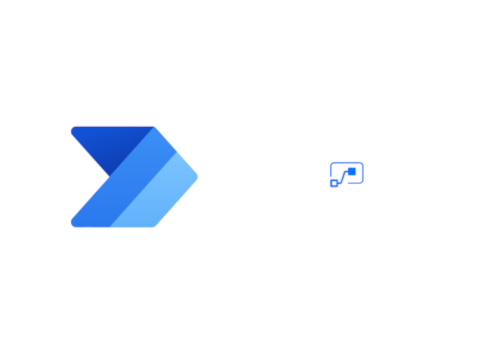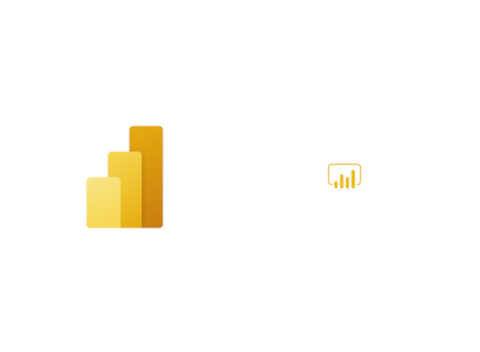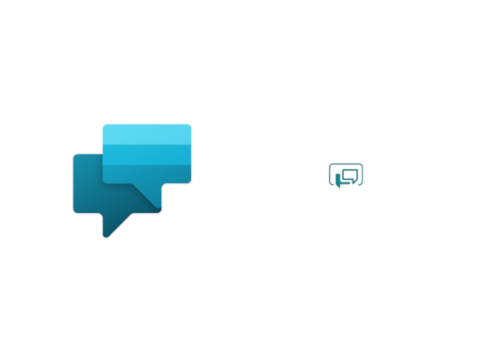The last two years have highlighted the need for intelligent digital workplaces. While Microsoft has recently worked to address the stark changes to work culture, the tech giant has developed programs aimed squarely at modernising the workplace itself. Microsoft’s Power Platform being one of these programs, allows companies to tailor their digital workplace to fulfil their specific businesses needs and make business processes run more efficiently. Where creating an app or automating a process may have been labour intensive and time consuming , Power Platform offers a rapid, low code solution to these demands.
Released in 2018, the Power Platform allows users to create highly specific workflows, bespoke apps, and generate more meaningful conceptualisations of company data. The suite offers increased integration and functionality, while equipping businesses with the ability to create their own individual solutions. Below we run through the main programs of the platform; Power Apps, Power Automate, Power BI, and Power Virtual Agents. Overall, these four programs respectively offer more expansive functionality, increased efficiency, more intelligent insights into your business, and more responsive query handling.

What are the Power Platform programs and what do they do?
Power Apps
Power Apps is a low code platform that enables users to create intelligent, easy to use, and specialised mobile apps. Its nature as ‘low-code’ ostensibly allows Power Apps to be created by employees from a range of disciplines for use in a particular job function or, perhaps, for more generic use across a given department or organisation. Microsoft attest that ‘Power Apps "democratizes" the custom business app building experience by enabling users to build feature-rich, custom business apps without writing code. While this is a low code experience, Power Apps is still a complex piece of software that will require extensive training in order to maximally leverage the software.
A Stock Check App: A clothing retailer could create a mobile Power App that photographs and scans a garment, identifies the garment size and type using machine learning, and then – after drawing from a stock handling program such as Dynamics 365 - generate a list of sizes and quantities available in-store.
An Onboarding App: A company could create a Power App that organises and centralises the onboarding process for new employees. Policy papers, registration forms, IDs, and other features employees are required to sign, fill out, and read could all be placed in one space. The app could have a ‘to do’ checklist and send scheduled or triggered reminders out to line managers to notify when employees have signed or viewed documents.

Power Automate
Previously ‘Microsoft Flow’, Power Automate allows users to create intelligent, automated workflows. Power Automate works via a system of triggers and flows. Triggers could be anything ranging from physical buttons, emails from a specific individual, a scheduled date and time, or a post from a social media user. These triggers initiate a ‘flow’, which are a series of commands or actions that the user defines. This could be something such as updating a database with new information, sending an automated email, adding information to a calendar. As businesses may not intuitively know where automation could benefit them, Microsoft’s Process Advisor can be used to identify where Power Automate can be used to automate repetitive processes.
Automate Event Invite Processing: A user could send out a Microsoft Form to attendees of an event, set up a trigger when a form is received back, and then set up a flow that populates an excel spreadsheet with the attendee details. Once populated with the details, a message could be sent to a Teams channel and/or email to notify the user that a new person has been added.
Automated Pitching: A lifestyle magazine could use Power Automate to create a workflow that is triggered every time a particular celebrity posts to Instagram. From there it could issue a series of commands that send the post to a specific editor or writer team within a program such as Microsoft Teams.

Power BI
Power BI, or Power Business Intelligence, allows users to create meaningful, insightful, and rapid visualisations from a wide range of data sources or environments (anything from SQL to excel). With these sources, users can easily model data with an array of visual tools including maps, charts, and tables.

Power Virtual Agents
The last of Microsoft’s major programs in the Power Platform is Power Virtual Agents. Chatbots have become ubiquitous to the point that they are almost an expected feature for customers when they visit a website. Microsoft’s Power Virtual Agents allow businesses to create and deploy chatbots rapidly and – in their most basic form – without code. Applications vary between customer service chatbots to bots used internally in an HR or departmental capacity. As call centres are still struggling to recover from reduction in staff as a result of the pandemic, having an intelligent chat bot that can be quickly deployed would alleviate some pressure.
A ‘return to work’ bot: A bot could be created to answer or pull up resources in response to simple or frequently questions that an employee returning to work may have to ask.

Our thoughts
While the Power Platform is indeed powerful and Power Apps allegedly “democratizing”, the Power Platform programs remain complicated to the layman. Employees hoping to use these programs will need adequate training and support to get the most out of the platform and its capabilities. So, while users may not need to write a line of code when using these programs, they will require technical skills.
Power Platform’s strengths are the pace at which apps or automations can be rolled out, the scope of what can be achieved and the inter-operability of the programs within the Microsoft stack. With the correct knowhow and leverage, the Power Platform can transform your business’s workflow into a more intelligent, efficient environment.
ClerksWell have decades experience working with the Microsoft stack and have an in-depth understanding of the Power Platform. If you are interested in discovering how the Power Platform can transform your workplace, our team of experts here at ClerksWell can identify your specific business needs and where we can help you develop your Power Platform set up.
For any help or queries you may have about the Power Platform or how ClerksWell can help you, please do not hesitate to get in touch with us here or call us on 020-7689-8800.









